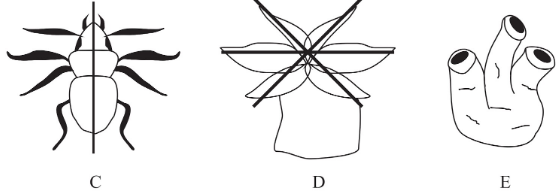
Answer
426.3k+ views
Hint: Cephalization is the centralization of the nervous system and the development of the brain and the head. It is an evolutionary trend and is associated with the movement of the head facing forward.
Complete answer:
Cephalization is an evolutionary trend in which nervous tissue, mouth, and sense organs are concentrated towards the front end of the animal in zoology. Organisms that are fully cephalized have a head and a brain while organisms with less cephalization display one or more regions of nervous tissue. Cephalization is mainly shown by animals that have bilateral symmetry and characteristic movement with the head facing forward.
Therefore, all the sense organs and tissues are concentrated near the head or front portion. Organisms with radial symmetry lack cephalization because in those organisms the nervous tissue receives information from various directions and their oral orifice is located in the middle directions.
Additional information:
Three advantages of cephalization are:
-It allows the development of the brain. The brain is the control room of an organism. Over the years and due to evolution animals have evolved complex neural systems and higher intelligence.
-Due to cephalization the sense organs cluster at the front of the body this allows the animal to scan its environment efficiently so that it can locate food and shelter and also protect itself from any potential danger.
-Also due to the presence of mouth near the sense organ and brain an animal can quickly analyze the food source.
So, the correct answer is ‘Type C Bilateral symmetry’.
Notes:
Predators usually have another special sense organ that is located near the oral cavity. This helps them to know more information about their prey. For example, cats have whiskers that help them to sense prey in the dark. Another example is sharks which have electroreceptors that allow them to locate prey.
Complete answer:
Cephalization is an evolutionary trend in which nervous tissue, mouth, and sense organs are concentrated towards the front end of the animal in zoology. Organisms that are fully cephalized have a head and a brain while organisms with less cephalization display one or more regions of nervous tissue. Cephalization is mainly shown by animals that have bilateral symmetry and characteristic movement with the head facing forward.
Therefore, all the sense organs and tissues are concentrated near the head or front portion. Organisms with radial symmetry lack cephalization because in those organisms the nervous tissue receives information from various directions and their oral orifice is located in the middle directions.
Additional information:
Three advantages of cephalization are:
-It allows the development of the brain. The brain is the control room of an organism. Over the years and due to evolution animals have evolved complex neural systems and higher intelligence.
-Due to cephalization the sense organs cluster at the front of the body this allows the animal to scan its environment efficiently so that it can locate food and shelter and also protect itself from any potential danger.
-Also due to the presence of mouth near the sense organ and brain an animal can quickly analyze the food source.
So, the correct answer is ‘Type C Bilateral symmetry’.
Notes:
Predators usually have another special sense organ that is located near the oral cavity. This helps them to know more information about their prey. For example, cats have whiskers that help them to sense prey in the dark. Another example is sharks which have electroreceptors that allow them to locate prey.
Recently Updated Pages
For a simple pendulum a graph is plotted between its class 11 physics JEE_Main

A particle executes simple harmonic motion with a frequency class 11 physics JEE_Main

At what temperature will the total KE of 03 mol of class 11 chemistry JEE_Main

ABC is a right angled triangular plate of uniform thickness class 11 phy sec 1 JEE_Main

The linear velocity perpendicular to the radius vector class 11 physics JEE_Main

The normality of 03 M phosphorus acid H3PO3 is class 11 chemistry NEET_UG

Trending doubts
Which is the longest day and shortest night in the class 11 sst CBSE

Who was the Governor general of India at the time of class 11 social science CBSE

Why is steel more elastic than rubber class 11 physics CBSE

Difference between Prokaryotic cell and Eukaryotic class 11 biology CBSE

Define the term system surroundings open system closed class 11 chemistry CBSE

State and prove Bernoullis theorem class 11 physics CBSE





